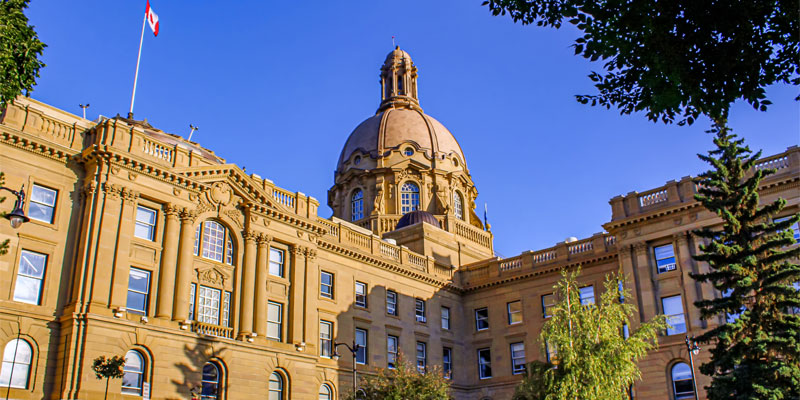With higher oil prices, Alberta government must avoid fiscal mistakes of the past

According to the Bank of Canada, the price of Brent Crude oil (a common benchmark) could reach US$100 per barrel in 2022 due to a surge in demand coupled with limited supply. For perspective, oil was trading at about US$50 per barrel in January of this year.
Higher oil prices would mean higher non-renewable resource revenue for the Alberta government, which is good news. But the government in Edmonton should not use this potential windfall to continue unsustainable spending.
The province has a history of financing ever-increasing spending with volatile non-renewable resource revenue (hereafter referred to as resource revenue), which has led to a boom-and-bust cycle in provincial finances. Put simply, when resource revenue is high, the province enjoys surpluses and increases spending. But once resource revenue falls, it incurs persistent deficits.

As shown in the chart above, increases in per-person government program spending (which includes total spending excluding interest costs) tend to follow periods of increasing resource revenue. Both measures are adjusted for inflation so they’re comparable over time.
For instance, resource revenue increased markedly in the 1970s, from $1.6 billion in 1970/71 to $15.7 billion in 1979/80. The provincial government simultaneously increased program spending, from $5,040 per person in 1970/71 to $10,263 in 1979/80. Despite a decline in resource revenue beginning in 1980/81, per-person spending remained high for several years and Alberta incurred a string of eight budget deficits beginning in 1986/87, which led to significant provincial debt.
The deficits during the 1980s coupled with increasing interest rates led to a near-fiscal crisis in the early-1990s. To eliminate the deficit, the Klein government had to enact extraordinary measures, which included reducing program spending by nearly $2,000 per person over three years. These reforms set the stage for more than a decade of surpluses beginning in 1994/95. And Alberta was “debt free” by 2000/01.
Unfortunately, the Alberta government did not learn from its past mistakes. When another cyclical increase in resource revenue began in 1999/00, the province fell into the same cycle of using comparatively high resource revenue to finance unsustainable growth in program spending. As shown, per-person program spending increased from $8,012 in 1999/00 to $10,618 by 2006/07—an increase of more than $2,600 per person.
Despite a significant decline in resource revenue in 2006/07, program spending continued to increase and surpluses turned to deficits by 2008/09. Program spending remained high, sitting at $12,885 per person in 2019/20 (pre-COVID) and deficits have persisted every year (excluding 2014/15).
A possible windfall in resource revenue in the near future would provide some temporary relief to Alberta’s finances, but the provincial government cannot continue to finance high spending with volatile resource revenue. History shows this road always leads back to deficits.
Author:
Subscribe to the Fraser Institute
Get the latest news from the Fraser Institute on the latest research studies, news and events.

